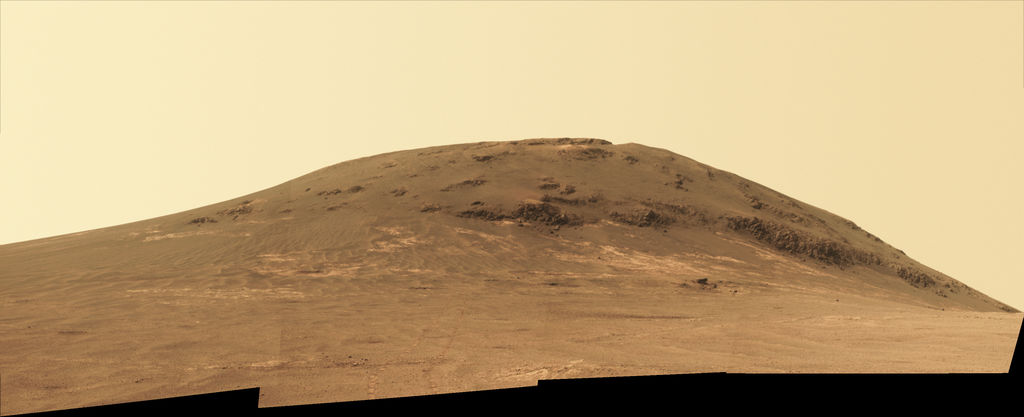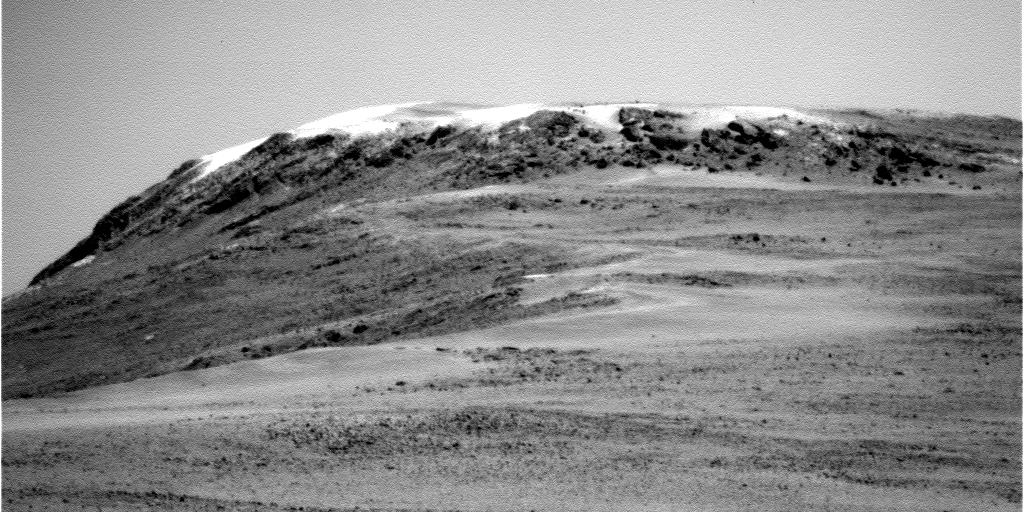22.07.2017

A portion of the new panorama showing the region just above Perseverance Valley, which is just below the crater rim. A broad notch in the rim, at right, is where water may have once flowed down through the rim and into the crater below. Image Credit: NASA/JPL-Caltech/Cornell/Arizona State Univ.
NASA’s Opportunity rover has been busy examining the entranceway to Perseverance Valley, a long, shallow gully-like channel on the rim on Endeavour Crater which was likely created by flowing water millions or billions of years ago. This feature has been a major target of interest for mission scientists since, if confirmed, this would be the first such gully seen up close by any rover. A new panoramic image just released shows the view on the crater rim just above the valley itself, which includes a possible “spillway” where water once flowed over the rim and into the crater down below.
“It is a tantalizing scene,” said Opportunity Deputy Principal Investigator Ray Arvidson of Washington University in St. Louis. “You can see what appear to be channels lined by boulders, and the putative spillway at the top of Perseverance Valley. We have not ruled out any of the possibilities of water, ice or wind being responsible.”

The full panorama, which spans about three-fourths of a full-circle view, from southeastward on the left, through westward in the middle, to northeastward on the right. Image Credit: NASA/JPL-Caltech/Cornell/Arizona State Univ.

View from orbit of Perseverance Valley (circle) which may be an ancient water-carved gully. Image Credit: ESA/DLR/FU Berlin (G. Neukum)/Paul Scott Anderson
On the right side of the panorama, a broad notch can be seen in the crater rim, which scientists think was likely a spillway, where either water, ice or wind flowed over the rim and into the crater. It isn’t known yet which explanation is accurate, but the valley does resemble ones known to have been formed by flowing water. Many such gullies and water-carved channels have been seen on Mars by orbiting spacecraft, but this would be the first time that one was studied on the surface. Principal Investigator Steve Squyres of Cornell University in Ithaca, N.Y. is optimistic however that this is indeed a water-carved gully:
“We are confident this is a fluid-carved gully, and that water was involved,” said Squyres. “Fluid-carved gullies on Mars have been seen from orbit since the 1970s, but none had been examined up close on the surface before. One of the three main objectives of our new mission extension is to investigate this gully. We hope to learn whether the fluid was a debris flow, with lots of rubble lubricated by water, or a flow with mostly water and less other material.”

Recent close-up image of rocks near Perseverance Valley, which have a kind of “scoured” appearance. Photo Credit: NASA/JPL-Caltech

View looking back toward Cape Tribulation which Opportunity left behind as it headed to Perseverance Valley. Photo Credit: Image Credit: NASA/JPL-Caltech/Cornell/Arizona State Univ.
The images of the panorama were taken during a lull period when the rover wasn’t driving due to a temporary stall in the left-front wheel’s steering actuator. The wheel was stuck pointing outward more than 30 degrees, but has now been straightened again, and from now on the rover will only use the rear two wheels for steering. In a light-hearted nod to the problem, the mission team called the new panorama “Sprained Ankle.”
Right now, both Opportunity and the other NASA rover, Curiosity, are waiting out the solar conjunction for about the next three weeks, when Mars passes behind the Sun as seen from Earth. During that time, the rovers can’t communicate with Earth by radio as they usually do. Once the conjunction is over, the rovers will return to normal operations in August.
Quelle: AS

